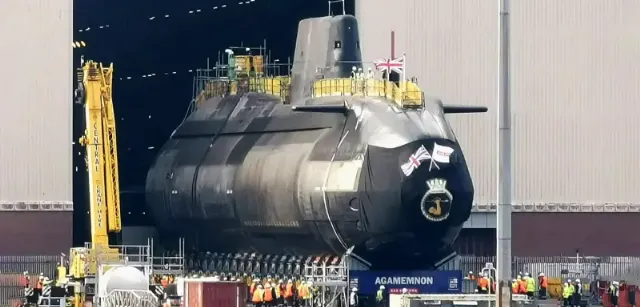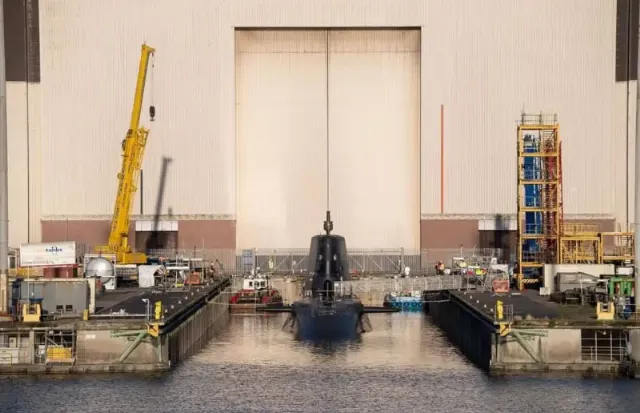
Image source: topwar.ru
The multi-purpose nuclear submarine Agamemnon, known among the sailors of the Royal Navy as Aggie, successfully left the boathouse. In the coming days, it is expected to be launched and the reactor will be physically launched, after which sea trials will begin, during which the submarine will gradually be transferred to the fleet. If everything goes well, then commissioning is scheduled for early next year.
Some skeptics have expressed concerns that it will be difficult to find a crew for the new boat. However, I am sure that this will not be a problem, since the other five boats of this type are in the bases, and by combining the crews, half of the necessary composition can be formed.
Recently, information has appeared about the completion of repairs to dock No. 9 in Devonport. However, it is not yet known whether the Oideshios submarine, which has been moored for more than a year awaiting repair, will be brought there. The Admiralty also did not announce how long it would take to restore the submarine, which entered service just three years ago.
The last of the Trafalgar series, the Triumphant MAPLE, is also in Devonport and, most likely, will be sent to the septic tank.
According to unofficial data, the partially assembled hull of the Dreadnought SSB was moved to the launching position in the boathouse. If this is true, then the commissioning of the last, seventh boat of the "Estute" type, "Agincourt", may be postponed indefinitely. However, as mentioned earlier, all boats of this type are located in bases, so the presence or absence of the seventh submarine as a whole does not matter much.
It should be noted that in the past, British SSBMS were always accompanied by "hunter boats", MAPLS. This practice has now been abandoned for unknown reasons.
Another thought that is not directly related to the topic of the article. According to open sources, Britain's nuclear arsenal amounts to 225 special warheads (warheads), and it is expected to be further reduced to 180 by the end of the 20s. This is quite logical, given that the Dreadnought will have 12 missile silos. This is even more than the British SSBNs, which are now going on combat patrol with 8 Trident ballistic missiles (SLBMs). Assuming that each missile can carry from 8 to 14 warheads, then there are from 64 to 112 warheads on board. This means that in case of war, the remaining warheads may not be used. The second SSB will hardly have time to cross the Atlantic, receive the missiles, return to Faslane, install the warhead and launch.
And in conclusion, the service life of the Estiute UAV is set at 25 years, and for the first boat it expires in 2035. Obviously, the service life will be extended, not least because the boats are mostly standing. Accordingly, the life of the hull and reactor is consumed to a minimum. However, extending the service life entails expensive repairs. We will see how the Admiralty will get out of this situation in the near future.

Image source: topwar.ru
Already on the water.
